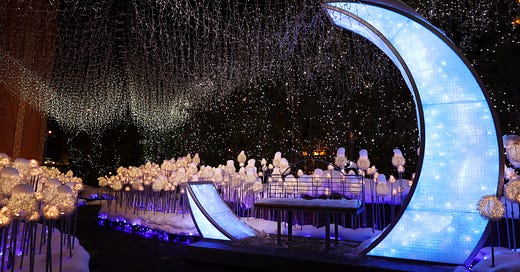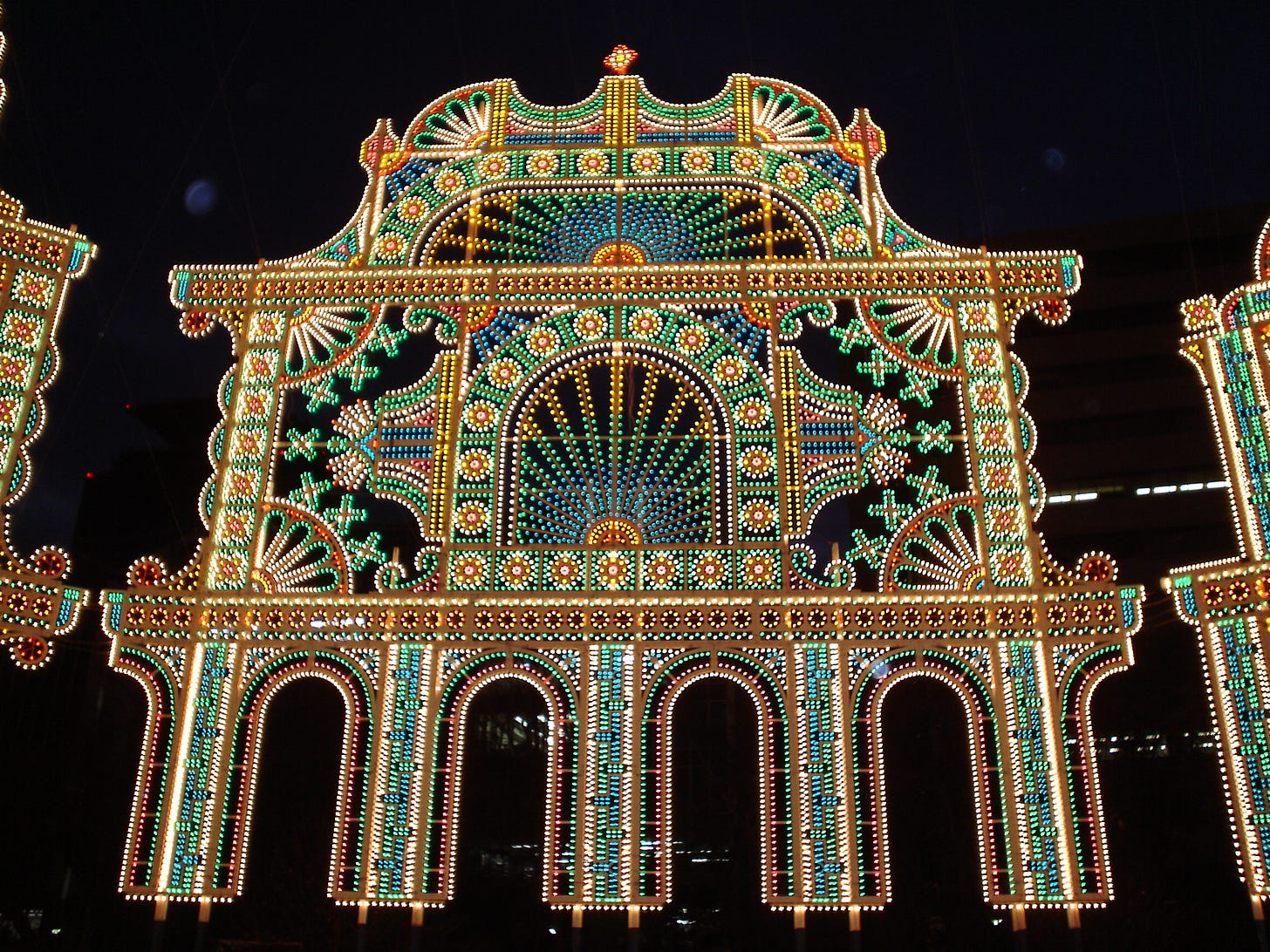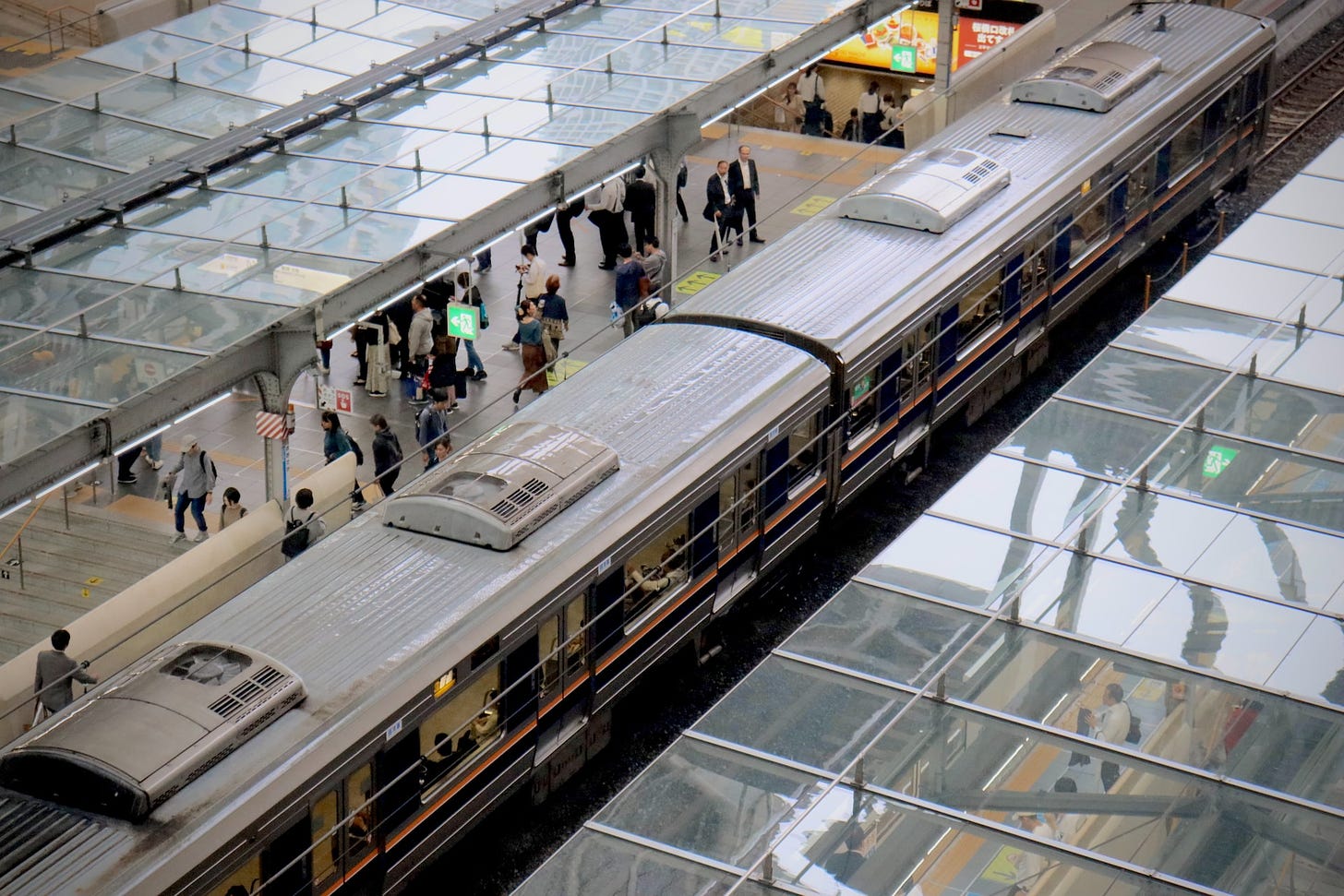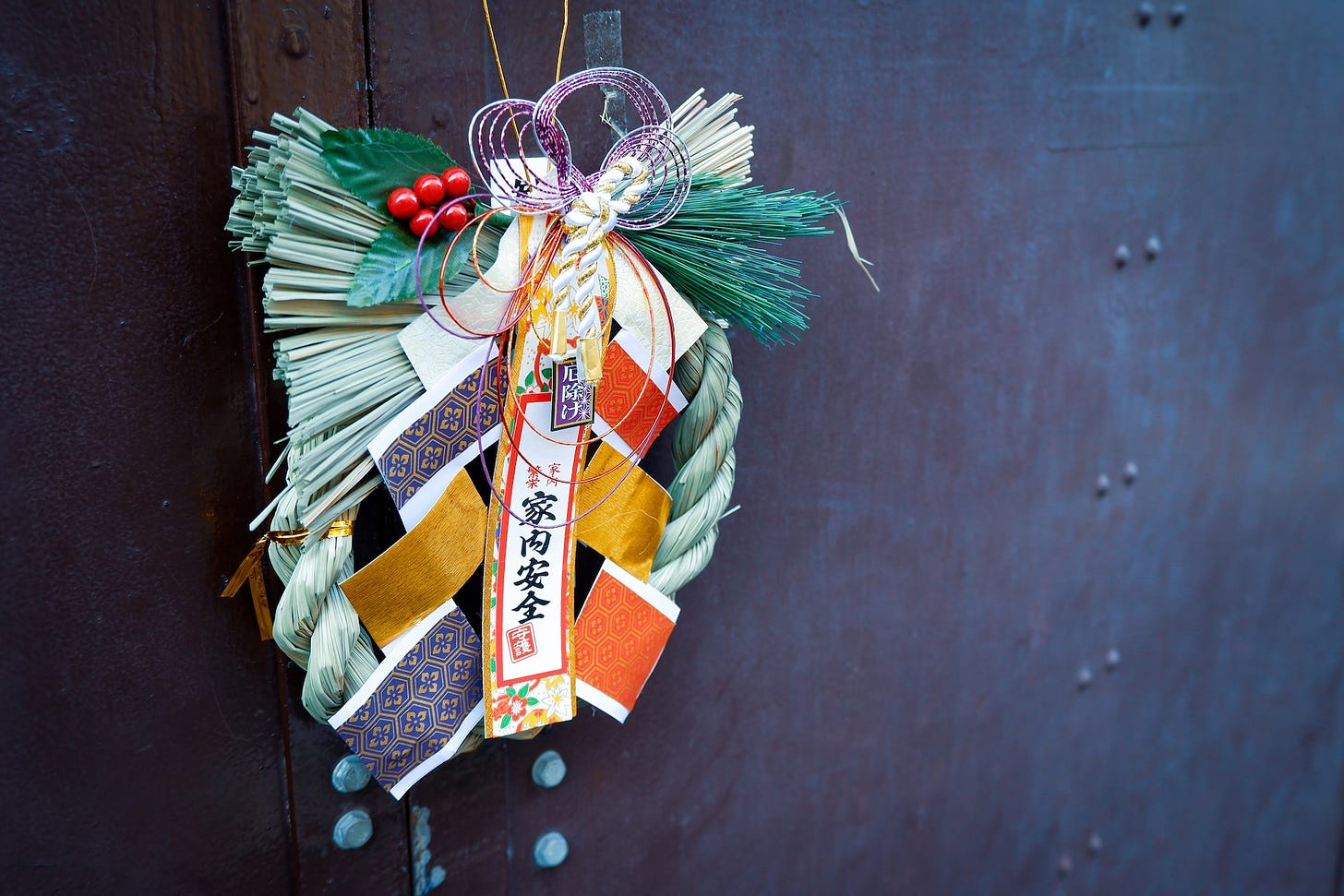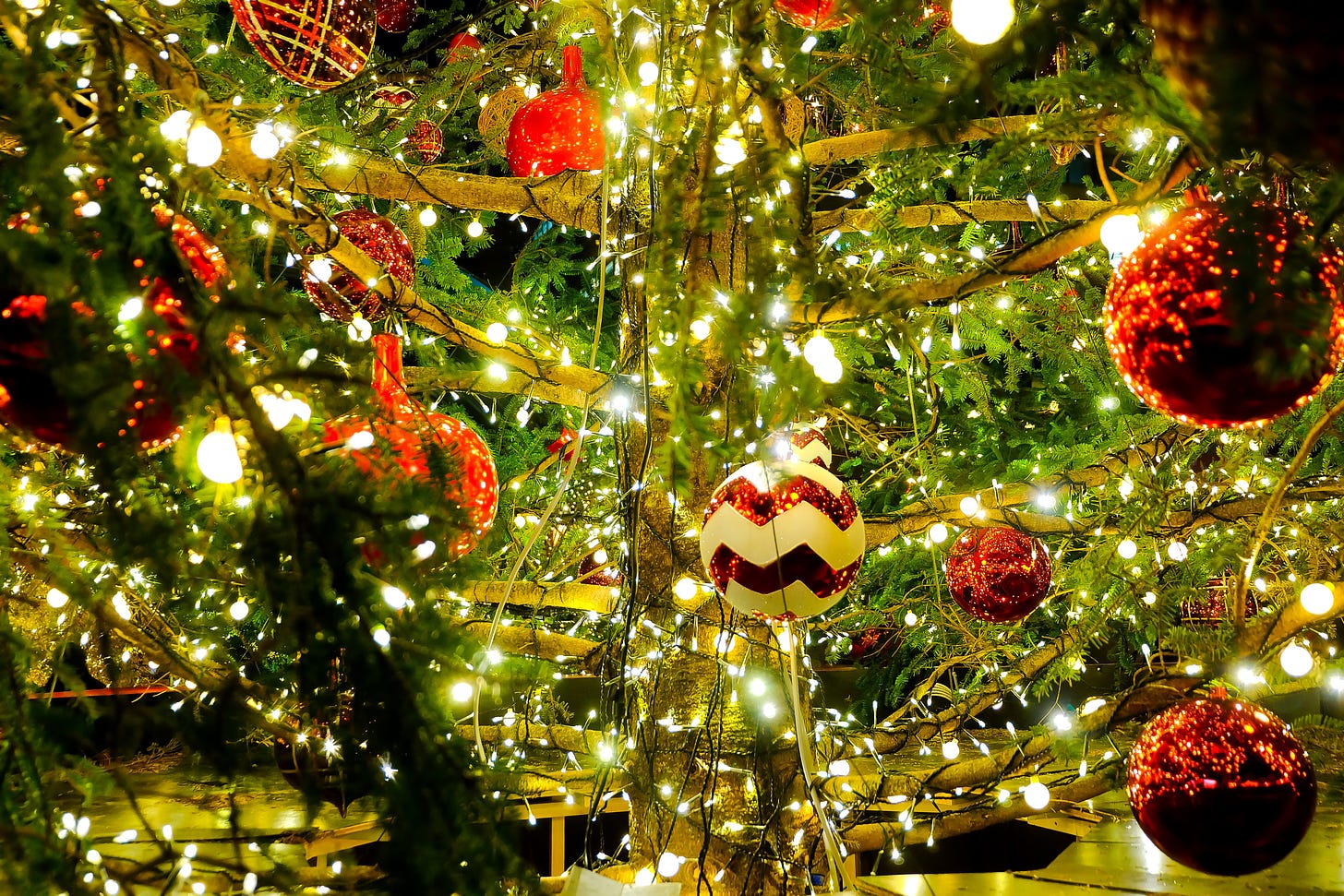December in Japan is Lit (Up)
Put some spark into your trip with the best seasonal illuminations
Hello Insiders!
In this month’s edition:
A Short Guide to Japan’s Illuminations
Two Handy Passes for Kansai
Pro-tips: Travel in Japan over New Year
What to see this month
December is a great month for travelling in Japan, as long as you don’t mind missing the autumn colours and can handle the cooler temperatures. Many Japanese will be busy tying up loose ends at work or attending bōnenkai (forget the year parties) so fewer people are travelling (except at New Year: see the pro-tip section later!) But this month, I want to give you my suggestion on what to see rather than where to go.
All across the country you’ll find winter illuminations, in major cities and at popular tourist spots, including the likes of Tokyo Disneyland and Universal Studios in Osaka. In Tokyo, there’s the Keyakizaka Illumination in the fancy Roppongi Hills area, Osaka has the Midosuji Illumination in a similarly upmarket shopping area, and Hokkaido’s capital city Sapporo has the Sapporo White Illumination (pictured above).
Some of the illumination events will end on Christmas Day or December 31st, but surprisingly, many continue in some form well into January and February next year. Wherever you are visiting this month, it’s easy to search for a nearby “light up” event by using WalkerPlus’ directory. Be sure to turn on auto-translate and search by prefecture.
I was originally going to recommend the Kobe Luminarie as this month’s pick, as this is the first time in four years that it’s been held, and in my (biased toward Kansai) opinion, it’s one of the best. But this year the Luminarie is being held in January rather than December (as is traditional). A symbol of hope that started after the Great Hanshin earthquake in 1995, the Luminarie lightworks are on the classy side of the illumination spectrum, but are none the less dazzling for it.
Helpful links
Keyakizaka Illumination: Until December 25th
Osaka Midosuji Illumination: Until December 31st
Kobe Luminarie: Until January 28th, 2024
Sapporo White Illumination: until March 14th, 2024
Search for other illuminations: WalkerPlus’ directory
Trip Planning Advice
As much as I love researching and answering questions about travel in Japan, time is money and I can’t plan everybody’s trips for free. But if I offered 30 minute personal consultations for a fee, would you be willing to pay?
Two Handy Rail Passes for Kansai
Increasingly, travellers are choosing to pass up the Japan Rail Pass and get one of the cheaper, regional alternatives. However, there are lots to choose from, and it’s hard to know which (if any) will pay off. This is particularly true for visitors to the Kansai area. JR West has far too many! It explains why recently, plenty of people have been asking me: “If I’m staying in Osaka and visiting Kyoto and Nara, which pass should I get?”
Often, the best answer to this question is simply “get an ICOCA card” (Kansai’s answer to Suica). But there are two other options you might want to consider.
For the budget-conscious
The JR Kansai Mini Pass offers unlimited rides in the core Kansai area. It’s valid for 3 days and covers all JR trains between Kobe, Nara, Kyoto and Kansai Airport, with the catch that you can’t take any shinkansen or limited expresses. However, JR trains are very often much quicker than private railways. At 3000 yen, I think this pass is a pretty good deal. If you do 3 day trips from Osaka or Kyoto, or if you use this pass to get in from Kansai Airport, it’s not hard to save money.
Sadly, the JR Kansai Mini Pass only gets you onto the Kansai Airport Rapid train and not the Haruka Limited Express, so it will take quite a bit longer to reach Osaka and Kyoto (around 2 hours).
Train Fares in Kansai
Kansai Airport ↔ Kyoto: 1910 yen
Osaka ↔ Nara: 820 yen
Kyoyo ↔ Nara: 720 yen
Osaka ↔ Kyoto: 580 yen
Kyoto ↔ Sannomiya (Kobe): 1110 yen
If you want speed AND savings
If you want to ride the Haruka, and get to Kyoto in only 76 minutes, you should get the Kansai Area Pass instead. This pass has a wider coverage area, stretching up to Tsuruga in the north, and Himeji to the west. You can buy it for 1, 2, 3, or 4 days, and you also get vouchers included for 1 day passes on the Keihan and Hankyu Railways, as well as the Kyoto City Subway. The 4 day version costs 7000 yen. Considering the round-trip between Kyoto and Kansai Airport costs over 6000 yen normally, and the Kyoto City Subway one day pass costs 800 yen, this pass is incredible value.
Another option: Haruka One-way tickets (also heavily discounted)
Travelling over Christmas and New Year: all my pro-tips
Spending Christmas and New Year in Japan can be challenging, rewarding, and confusing, all at the same time. Most Japanese return home during this period, and you’ll also find some attractions closed. However, if you do a bit of research and work around these things, and try not to travel on the peak “moving” days, I think it’s a fantastic time to visit.
But what do you need to know if travelling around this time?
Christmas Day
With a lack of Christians and Christian heritage, Christmas is not widely “celebrated” as such in Japan. December 25th is treated as a normal business day, and shops and attractions will be open. Although you might find some special Christmas Day events happening (Sapporo has a Christmas Market), in reality, the majority of these will happen on Christmas Eve.
Restaurants and cafes will be open over Christmas, and while some will close over the New Year, you’ll still be able to find somewhere to eat - so don’t worry!
New Year
Between December 28th and January 4th, Nozomi shinkansen have only reserved seating. If you want to use an unreserved seat, you’ll need to take a Hikari, Sakura, or Mizuho. (Or Kodama, if you want to arrive in 2025.)
I expect these non-Nozomi trains to be ridiculously crowded in the unreserved cars thanks to this rule, so I recommend you reserve seats if you can at this time.
Don’t quote me on this, but I expect the absolute busiest days for travel to be December 28th and 29th, and January 3rd and 4th.
Railways, buses, and subways tend to operate on their weekend timetables over the New Year, sometimes with fewer services. It’s a good idea to check over your return journey schedule ahead of time!
The Insider Advantage
If you have specific questions, ideas, or requests for future emails or videos, you can let me know by replying to this email. I might answer you directly, in the next month’s email, or in a special video. Let me know what’s on your mind!
That’s all for this month! Merry Christmas!
Andrew
*There are some affiliate links in this email: I will earn a small commission if you buy something, and it costs you nothing. Cheers!

